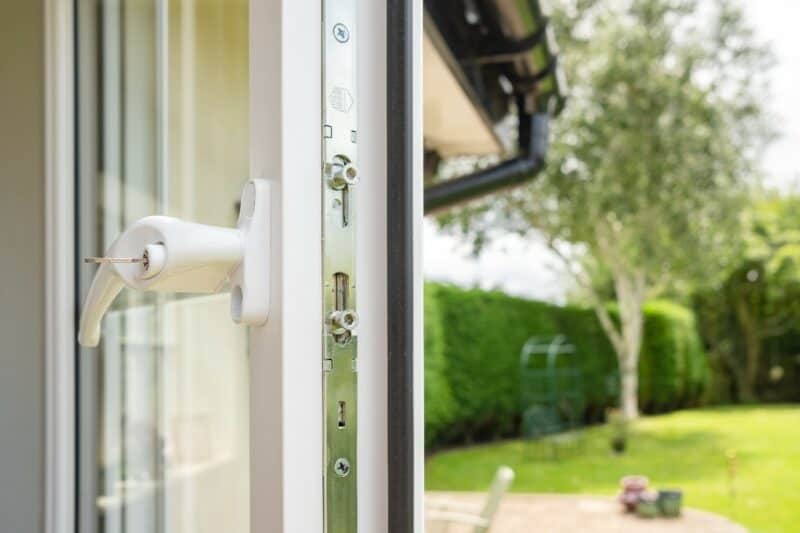One of the best things about a new build is that everything is shiny and new – and your windows are no exception. If you’re a self-builder working on a new build, undertaking a conversion or renovating a current property, windows require special attention. From striking modern design to authentic period styles, your choice will determine the character of your property. Whilst aesthetic is important, it must be combined with modern innovation like energy efficiency, security, and durability for premium new build windows. Considering all the options available to you can seem overwhelming. However, this article will take you through all the key steps when it comes to making a decision. This way you can have peace of mind that the personality of your new build windows will undoubtedly shine.
Step One: Building Regulations For New Build Windows
Fortunately for those DIY fanatics, it’s easy to keep track of all the construction legalities. At a minimum, when it comes to building regulations for windows on a new build, your supplier should provide the following:
Part L (energy efficiency)
Window Energy Ratings (WER) provide an outline of the overall value for energy efficiency. This includes elements such as thermal efficiency, solar gain, and air leakage of a window. They’re rated using a scale of A to G, symbolising total energy efficiency. There’s no minimum U-Value for your new build windows. However, it does depend on the overall energy rating being strived for on the property as a whole. Your supplier will determine the U-Value your windows need for the desired level of performance via SAP calculations. Keep in mind – the lower the U-Value, the more energy-efficient your new build windows will be.
Part B (means of fire escape)
Any window replacement or upgrade, no matter whether it’s for a new build or renovation property, should not be lowered in terms of its escape route. All rooms should have a means of exit under the current building regulations for new build windows:
- Ground floor rooms require a fire escape window.
- First floor rooms (no more than 4.5m above ground level) require a fire escape window.
Part F (ventilation)
Don’t forget your new build windows will need to have trickle vents to allow for ventilation unless you plan on installing a mechanical ventilation system. Trickle vents are a type of hooded vent normally situated at the top of your window frame. The outer part has a grill on it to stop insects from getting in whilst the inner part has a flap, so it can be opened and closed. The size of your trickle vent will depend on the size of the window, as well as the room in question.
Part K (safety & protection)
If your windows are near doors (within 300mm) you’ll need to have toughened safety glass. It’s designed to smash into tiny little pieces if someone happened to collide with it and break it. This way you can be rest assured that injuries from shards of glass have been minimised.
Step Two: Security
It’s without doubt that we want our homes to be as secure as possible. Investing in the best safety measures for your doors and fitting cameras is great. However, you may be overlooking one major security breach concern – your windows.
When it comes to new build homes security standards are stricter. Granted, you’ll want free reign to design your property however you like. However, it’s vital changes or additions comply with building regulations for new build windows. So, it’s important to make sure you’re buying windows from a reputable supplier. This means you won’t have to worry about your new venture not complying with the legalities. Make sure the windows you choose comply with PAS 24 or Secured by Design certification. This way you’ll have peace of mind that you have the best security to keep thieves out and your family safe. Remember – any reliable company will provide you with all the information you need in a heartbeat.

Step Three: Picking The Right Type of Glass
It’s time to choose the best type of glass for your new build windows. In these types of properties, glazing is crucial – not only for the design but for your budget too. This decision is vital as it’ll also dictate how highly the window ranks in terms of energy efficiency.
There are two leading options for glazing – double or triple. Both deliver exceptional sound insulation and excellent security. However, triple glazed windows are always going to offer that little bit more in comparison to double glazed windows. This is especially true when it comes to heat retention. The extra layer of glazing can prevent problems with damp, stop heat escaping during chilly winter nights and make your home more secure. When you’ve invested time and money on your swanky new build, such features should be a minimum.
Step Four: Styling
Once you’ve got all the technical and legal requirements out of the way, it’s time for the fun part – styling. Although, when choosing the style of windows for your new build, remember from a planning perspective the council will consider the selections you make.
Do you need your windows to make a bold contemporary statement? Or are you looking for quintessential British design without compromising on your overall vision? Aside from visuals, also think about how you want the windows to perform. How would you like them to open and close? Are they going to be in a room that gets plenty of sunshine or a room that’s not going to be used much? All these factors are important considerations as they’ll contribute to the overall look and character of your property.
Traditional or Modern?
Regardless of whether you’re striving for traditional or contemporary, you can still receive modern innovation with either. So, you don’t need to buy the most contemporary-looking window for your new build to get good energy efficiency. If you’re a traditionalist at heart, modern materials such as uPVC and aluminium can replicate period features. For instance, Georgian design can be brought to life through casement and sliding sash windows.
If Edwardian or Victorian styles are more to your taste, these can be mimicked via sliding sash windows too.
You’ll be pleased to know your styling options don’t end there either. Perhaps you’re a fan of the quaint country-cottage feel? In this case, uPVC flush casement windows are better suited than the standard casement – and one of the most popular in the UK for new builds. This all down to it being able to offer the beauty of traditional casement windows as well as superb flush detailing for a seamless finish. If you’re creating a cutting edge, contemporary designer property, aluminium windows are the one. Their sleek, clean lines will show your new build property at its best.

Real Timber or uPVC Wood Effect?
We understand for many there’s nothing quite like the rustic feel of timber windows. When it comes to your new build, you may be torn between whether to opt for real wood or the timber effect. Whilst the decision is obviously all yours, it’s worth knowing real timber windows have their downsides. They require high maintenance, are more susceptible to decay and can be more susceptible to break-ins if they’re not looked after properly. When you choose uPVC windows, you won’t have to sacrifice your love for the old-style appeal of wood. Just go for a textured woodgrain effect instead. It has a very convincing appearance, that looks and feels just like traditional timber windows. Whether sash or casement, to the naked eye wood effect uPVC windows replicate timber beautifully. This means you can have the best of both worlds, with the allure of a wooden window but without the pitfalls.
Choosing windows for your new build is an exciting venture. Whilst it’s a time for you to get creative, it’s also important you consider the other homes neighbouring you. Ensuring your windows match the surrounding new builds is key. The wrong style of windows on your home can make it stand out for all the wrong reasons. After all they’re the eyes of a home and a little TLC is required to get them just right. Whilst the decision is extremely important, that doesn’t mean it has to be a boring one. You can still have the most stylish windows on the street, without foregoing on the essentials – efficiency, security, and durability.
To talk to your local installer about fitting your new Genesis windows for your self-build and renovation projects, click on the ‘Find Local Installers’ button at the top of this page and enter your postcode. Or contact us direct at [email protected]. Alternatively, you can continue browsing our website and see the likes of our Sliding Sash Windows, Bifold Doors and more!


